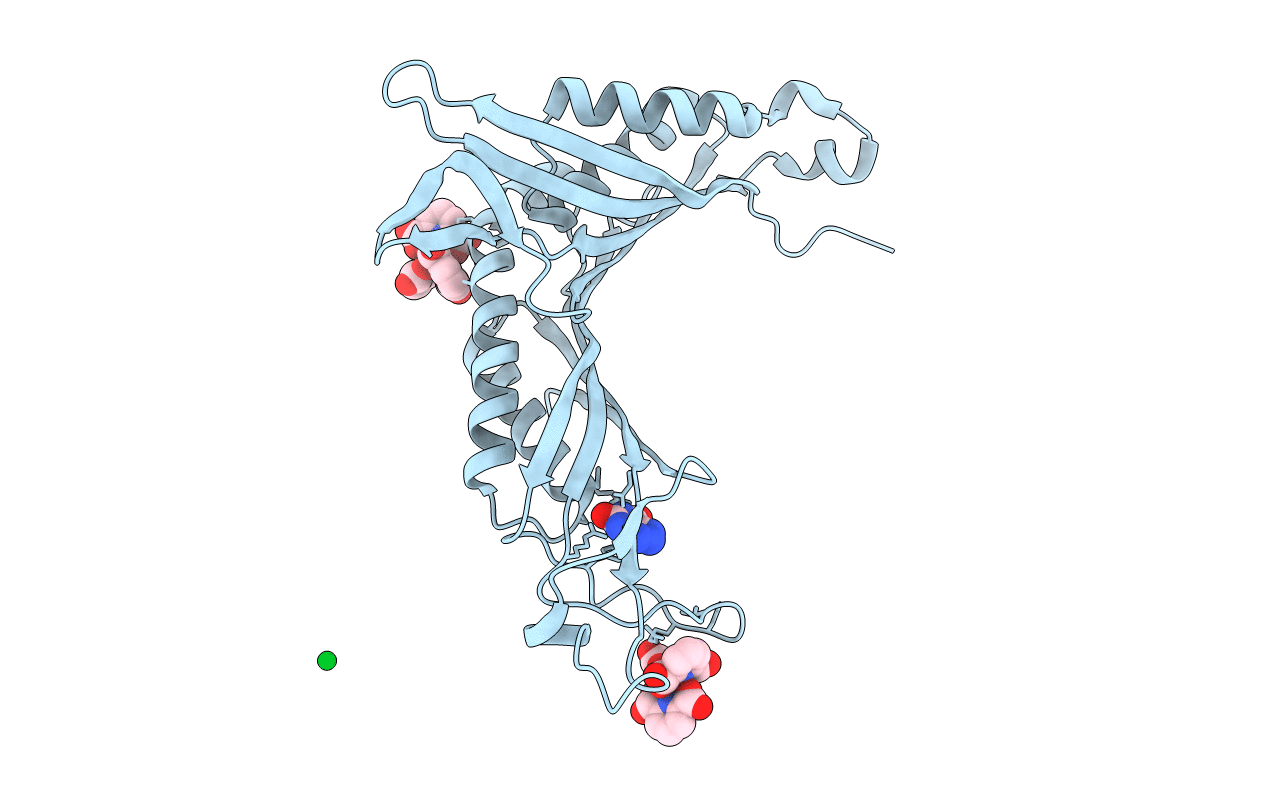
Deposition Date
2007-04-03
Release Date
2008-04-22
Last Version Date
2024-02-21
Entry Detail
PDB ID:
2PES
Keywords:
Title:
Urate Oxidase in complex with tris-dipicolinate Lutetium
Biological Source:
Source Organism:
Aspergillus flavus (Taxon ID: 5059)
Method Details:
Experimental Method:
Resolution:
1.60 Å
R-Value Free:
0.19
R-Value Work:
0.17
R-Value Observed:
0.18
Space Group:
I 2 2 2


